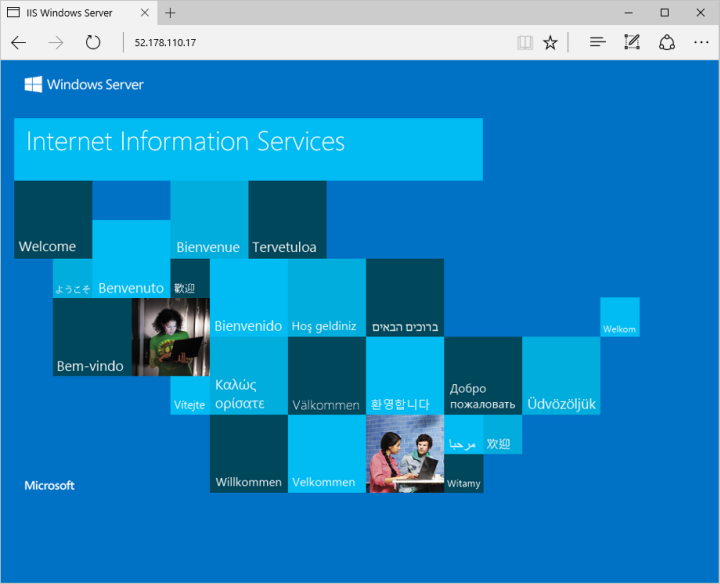The Azure PowerShell module is used to create and manage Azure resources from the PowerShell command line or in scripts. This quickstart shows you how to use the Azure PowerShell module to deploy a virtual machine (VM) in Azure that runs Windows Server 2016. You will also RDP to the VM and install the IIS web server, to show the VM in action.
If you don't have an Azure subscription, create a free account before you begin.
Launch Azure Cloud Shell
The Azure Cloud Shell is a free interactive shell that you can use to run the steps in this article. It has common Azure tools preinstalled and configured to use with your account.
To open the Cloud Shell, just select Try it from the upper right corner of a code block. You can also launch Cloud Shell in a separate browser tab by going to https://shell.azure.com/powershell. Select Copy to copy the blocks of code, paste it into the Cloud Shell, and press enter to run it.
Create resource group
Create an Azure resource group with New-AzResourceGroup. A resource group is a logical container into which Azure resources are deployed and managed.
Azure PowerShell Comand:
New-AzResourceGroup -Name myResourceGroup -Location EastUS
Create virtual machine
Create a VM with New-AzVM. Provide names for each of the resources and the New-AzVM cmdlet creates if they don't already exist.
When prompted, provide a username and password to be used as the sign-in credentials for the VM:
Azure PowerShell
New-AzVm `
-ResourceGroupName "myResourceGroup" `
-Name "myVM" `
-Location "East US" `
-VirtualNetworkName "myVnet" `
-SubnetName "mySubnet" `
-SecurityGroupName "myNetworkSecurityGroup" `
-PublicIpAddressName "myPublicIpAddress" `
-OpenPorts 80,3389
Connect to virtual machine
After the deployment has completed, RDP to the VM. To see your VM in action, the IIS web server is then installed.
To see the public IP address of the VM, use the Get-AzPublicIpAddress cmdlet:
PowerShell
Get-AzPublicIpAddress -ResourceGroupName "myResourceGroup" | Select "IpAddress"
Use the following command to create a remote desktop session from your local computer. Replace the IP address with the public IP address of your VM.
PowerShell
mstsc /v:publicIpAddress
In the Windows Security window, select More choices, and then select Use a different account. Type the username as localhost\username, enter password you created for the virtual machine, and then click OK.
You may receive a certificate warning during the sign-in process. Click Yes or Continue to create the connection
Install web server
To see your VM in action, install the IIS web server. Open a PowerShell prompt on the VM and run the following command:
PowerShell
Install-WindowsFeature -name Web-Server -IncludeManagementTools
When done, close the RDP connection to the VM.
View the web server in action
With IIS installed and port 80 now open on your VM from the Internet, use a web browser of your choice to view the default IIS welcome page. Use the public IP address of your VM obtained in a previous step. The following example shows the default IIS web site:

Clean up resources
When no longer needed, you can use the Remove-AzResourceGroup cmdlet to remove the resource group, VM, and all related resources:
Azure PowerShell
Remove-AzResourceGroup -Name myResourceGroup

No comments:
Post a Comment